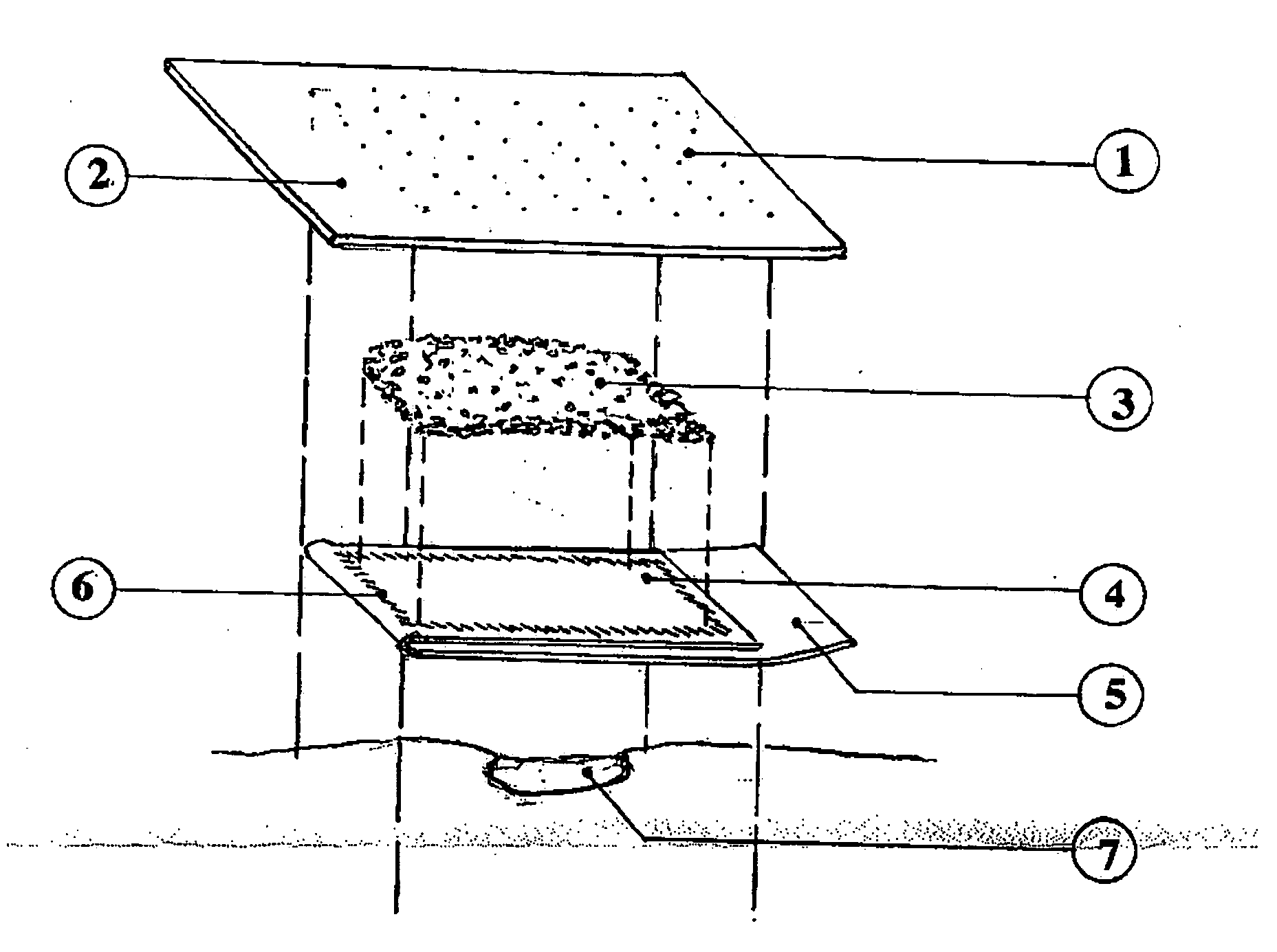Hemostatic compression bandage
a compression bandage and hemostatic technology, applied in the field of hemostatic bandages, can solve the problems of affecting the healing effect of the wound site, the inability to develop an ideal delivery system or bandage, and the loss of powdery powder before it reaches the wound si
- Summary
- Abstract
- Description
- Claims
- Application Information
AI Technical Summary
Benefits of technology
Problems solved by technology
Method used
Image
Examples
example
[0034] A fibrin bandage was constructed as follows:
[0035] The backing was a 10 cm2 Polysorb® (polyester) 2 mm thick felt (U.S. Surgical Corp.). Lyophilized salmon fibrinogen (19 mg / cm2) and thrombin (50 U / cm2) were mixed and applied as a finely ground powder to the Polysorb® backing. The powder was applied to all of the Polysorb® backing except for a 10×2 cm area on one end, the pressure region.
[0036] The fibrinogen and thrombin formed a loose covering of powder ranging from 0.5 to 0.8 cm thick.
[0037] One end of a 10×20 cm polyethylene sheet was used to cover the powder. The sheet was heat-sealed to the Polysorb® backing around the edge of the powder, surrounding and containing the powder. The remaining polyethylene sheet was then folded back over the enclosed powder, leaving a 2 cm portion of the sheet extending beyond the bandage as a “pull-tab”.
[0038] The bandage was placed, with the polyethylene side down, on a cellulose sponge that had been soaked in distilled water. Hand p...
PUM
 Login to View More
Login to View More Abstract
Description
Claims
Application Information
 Login to View More
Login to View More - R&D
- Intellectual Property
- Life Sciences
- Materials
- Tech Scout
- Unparalleled Data Quality
- Higher Quality Content
- 60% Fewer Hallucinations
Browse by: Latest US Patents, China's latest patents, Technical Efficacy Thesaurus, Application Domain, Technology Topic, Popular Technical Reports.
© 2025 PatSnap. All rights reserved.Legal|Privacy policy|Modern Slavery Act Transparency Statement|Sitemap|About US| Contact US: help@patsnap.com


